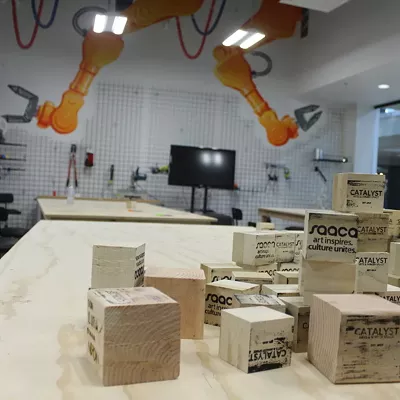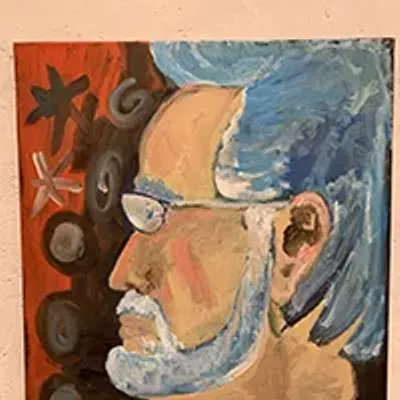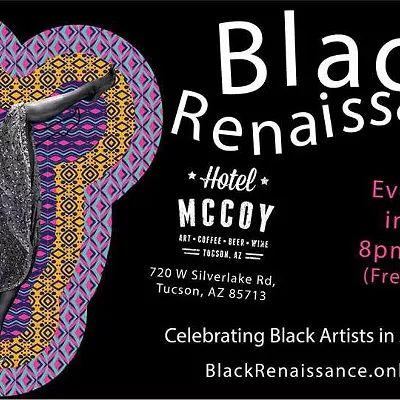Light filtered in through a sheer curtain, illuminating the pulled-back sheets of a bed that seemed but lately abandoned. A shrine of family photos and a picture of the long-dead Pope Pius XII graced a dresser. Tiny handwritten notes and prayers, some in Spanish, some in English, were pinned to walls.
At this point in his life, Bernal had already been teaching photography at Pima Community College for five years, delighting the fledgling school's students with his larger-than-life personality and uncanny ability to offer good advice. And he had studied with Arizona's incomparable Frederick Sommer, a photographic master of, among other things, elegantly composed still lifes.
Bernal had no trouble recognizing in the barrio house a photographic treasure trove. After contacting police and neighbors to no avail, Bernal began photographing among its dusty shrines. Working in black and white, he made ethereal pictures that are among the best of his career, at once rigorously composed and emotionally illuminating.
It was weeks before he tracked down Mary Benetiz, the elderly woman whose portrait he'd made in absentia. She was in a nursing home, but Bernal showed her the pictures of the beloved house she would never see again. She gave him her blessing and, one suspects, her gratitude.
The photographs in the "Benetiz Suite" are a highlight of the Bernal retrospective Barrios now on view at the Pima Community College gallery, newly rechristened in honor of the late photographer. Too long hidden from view, the 80 pictures in the show reaffirm Bernal's position as a preeminent photographer of Mexican-American life. Curated by Ann Simmons-Myers, Bernal's friend and now head of the Pima photography program, the photos span 18 years, beginning with black-and-white shots of his two little girls in the early '70s and ending with his 1988 Lubbock series. A portrait in full color of the barrio's high Baroque yards, the Lubbock pictures abound in potted plants and kids and cyclone fencing and old abuelos showing off their homegrown vegetables.
The show has a few surprises, including the antic Nixon series from the mid-'70s. In the time of Watergate, Bernal had his small daughters pose in Nixon masks in the unlikeliest of settings. The little Nixon rubs his chin thoughtfully in front a drab boarding house and crosses his knees provocatively in front of a Welcome to Mexico sign. The pointed political humor, skewering the man-who-was-not-a-crook, shows a side of Bernal not always noticed.
But Bernal's relentless visual chronicling of the Mexican-American community is in itself a kind of political act, asserting the value of a culture too often ignored by mainstream America. The country may be becoming aware, however, dimly, of the growing number of it Latino residents, but 20 years ago these lives lived along la frontera were borderline, both geographically and metaphorically. Bernal's project puts the stalwart churchgoing grandmas, the sneering cholos in their big cars, the kindly barbers in their shops and the teenage girls in their quineceañera dresses, front and center, in his pictures and in American life.
Bernal eventually moved from black and white into luminous color, the better to evoke the vivid hues of the barrio. His pungent color works are formally perfect: planes of green hover over rose; blue walls glow over a dark swathe of floor. House interiors become magical, spiritually charged retreats, yards metamorphose into gardens of unearthly beauty. Best of all, perhaps, are the intimate pictures of people, mostly women, inside their homes. Almost always illuminated by the Southwestern sunlight poring through translucent curtains, these pictures lionize the women as enduring souls of the house.
"Dos Mujeres, Douglas, Arizona," 1978, shot in Bernal's hometown, is my favorite. Brilliantly divided into planes of bright pink and deep green, the picture also charts a life's progression, from childhood to womanhood. In the dark green foreground, a modest young girl in an apron looks up from her sewing, like a Vermeer figure interrupted at her work. In the far room, bathed in a rosy light, an alluring young woman sits expectantly on her bed, looking boldly into her future.














